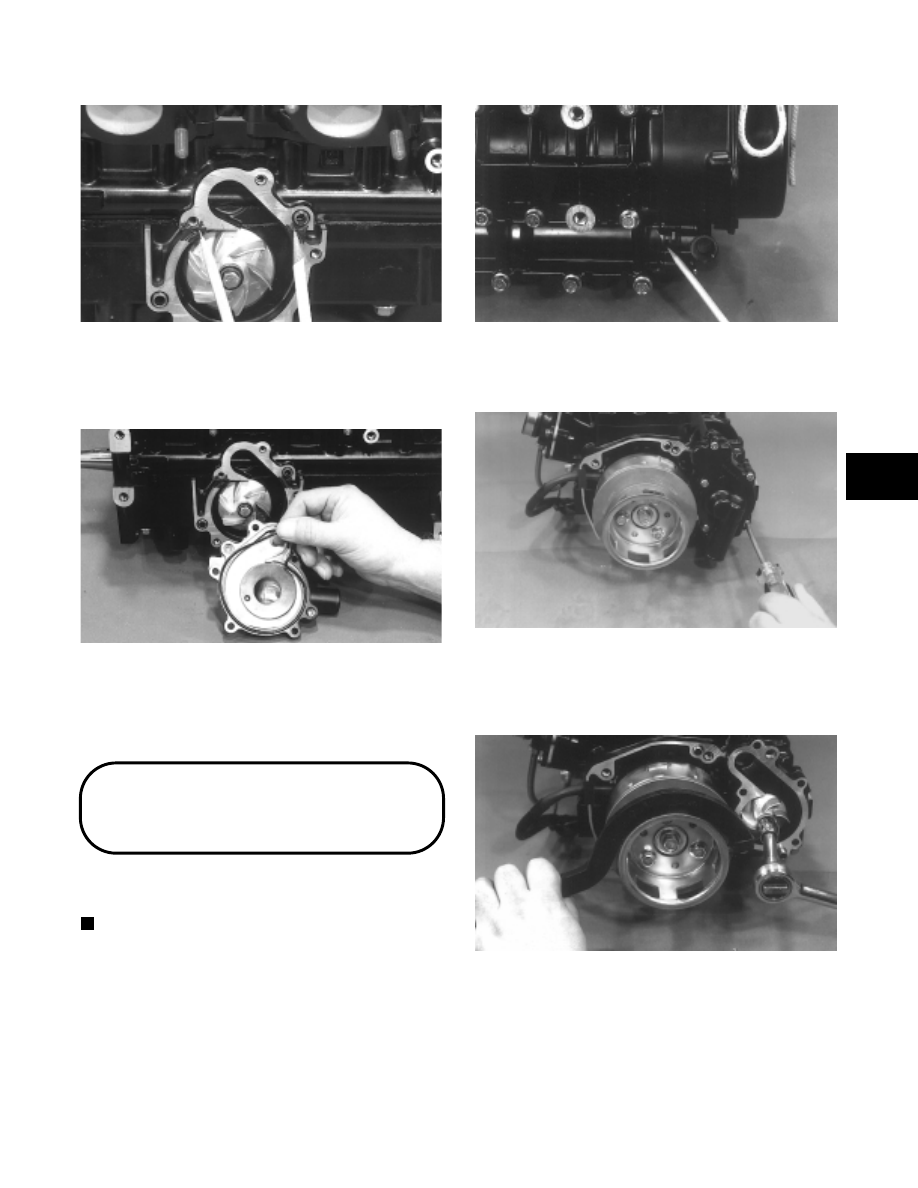Snowmobile Arctic Cat (2000 year). Instruction - part 43

Fig. 3-43
AN179
11. Position the O-ring into the water pump cover; then
install the cover. Secure with five screws. Tighten
securely.
Fig. 3-44
AN180
12. Fill the cooling system with antifreeze. Start and
run the engine. Check for leaks and recheck the
cooling system to make sure it has been properly
filled.
Repairing Water Pump
(800/1000 cc)
REMOVING AND DISASSEMBLING
NOTE: A bleed hole is located at the bottom of the
water pump housing. If there is any sign of coolant
leakage from the bleed hole, the water pump seals
must be replaced. When servicing the water pump,
use Water Pump Bearing and Seal Kit (p/n
0644-084).
Fig. 3-45
AQ104
1. Remove the recoil starter and magneto housing;
then remove the water pump cover.
Fig. 3-46
AQ095
2. Secure the crankshaft using a spanner wrench; then
remove the cap screw securing the impeller.
Remove the impeller from the shaft.
Fig. 3-47
AQ096
3. Slide the center section of the water pump from the
shaft. Inspect both the rear and front seals. If either
appear in poor condition, replacement is necessary.
3
3-11